By Roger Rittmaster
August 14, 2023
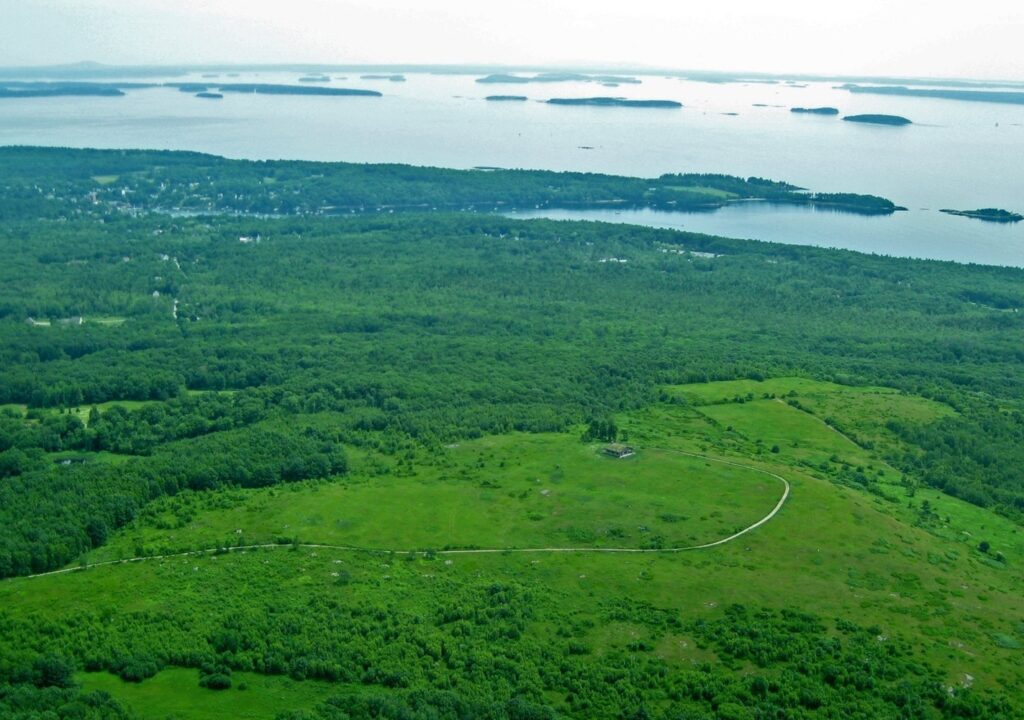
Beech Hill was Coastal Mountains Land Trust’s first preserve, initially created as an easement in 1986. With financial help from the Stetson Family in 2003, Maine Coast Heritage Trust purchased the land and transferred the Preserve to the Land Trust three years later. The ecological beauty of Beech Hill rests not only with its spectacular views of Penobscot Bay, but also with the diversity of habitats within the Preserve.
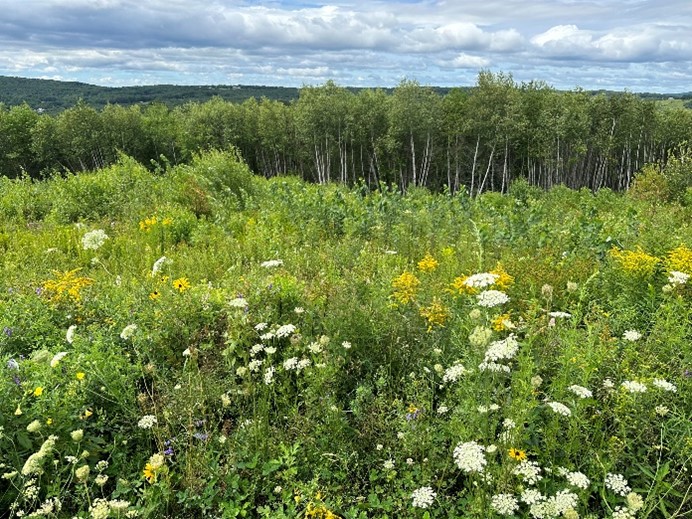
If not for the foresight of its early owners and conservationists, Beech Hill could have become a housing development. Alternatively, if had been left “natural”, it would return to the forested landscape that likely existed 400 years ago. In fact, in just 15 years or so, the fields of Beech Hill would be covered in an early succession forest as shown in the background of this photo. There would be few wildflowers and far fewer species of plants, birds and other animals than exist there now. And no blueberries!
The conservation of Beech Hill, with its mature forests, transitional woods, wildflower meadows and blueberry fields, has taken thoughtful and consistent management. To sustain Beech Hill’s historic landscape for the benefit of community, wildlife, blueberries, and scenic views, the Land Trust has launched the Beech Hill Fields & Habitat Initiative. This is an effort well worth supporting.
Last week I walked up to Beech Nut (the sod-roofed building on top of Beech Hill) to photograph and describe some of the wildflowers that one typically sees there in mid-August. Hopefully, these photographs will persuade you to visit the Preserve before these wildflowers turn to seed.
The dominant wildflowers along the road are the goldenrods (genus Solidago), members of the Aster family (Asteraceae). There were at least 5 species. Goldenrods can be generally recognized by their profusion of small yellow flowers (except for Silverrod which has white flowers.) The most common species by far was the Canada Goldenrod, which is one of the first species to bloom in late July. It can be recognized by its spray of yellow flowers in all directions and 3-veined leaves with teeth on the margins.
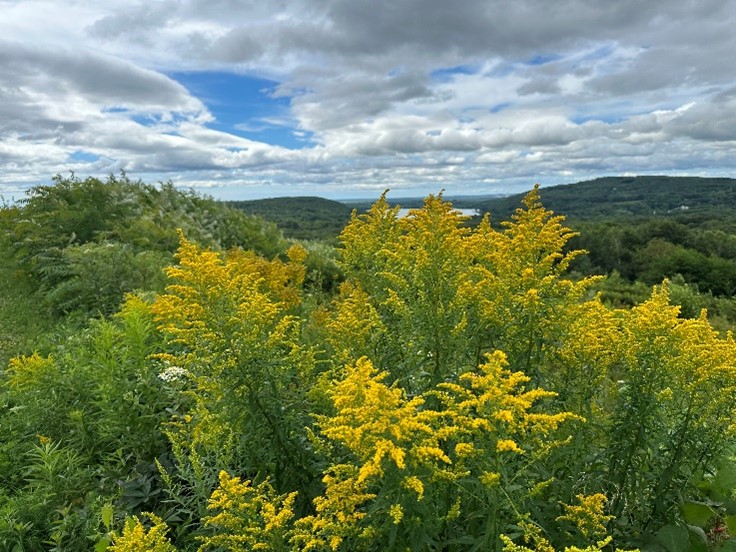
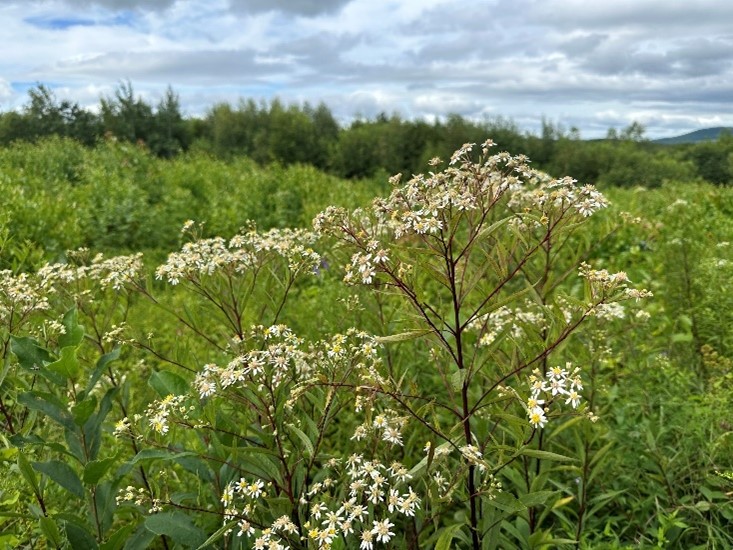
Another flower in the Aster Family that is just starting to bloom is the Flat-top White Aster (Doellingeria umbellata). It has an umbrella-shaped spray of white ray flowers that surround numerous tiny yellow disk flowers in the center. The stems are often maroon or occasionally green. The genus used to be the easily-remembered “Aster”, which was changed to “Doellingeria” by supposedly erudite taxonomists.
One flower probably everyone knows is Queen Anne’s Lace or Wild Carrot (Daucus carota). It is a member of the carrot family Apiaceae, and edible carrots are a subspecies of Queen Anne’s Lace. It is non-native, originating in Europe. It is a biennial plant meaning that each plant lives for two years. The flower head consists of numerous tiny flowers in an umbel (umbrella) shape. After fertilization the flower heads curl up into a vase shape, as seen in this photo. Some flower heads have a dark central floret (tiny flower), which is postulated to increase visitation by pollinators. Queen Anne’s Lace cannot compete with native wildflowers in a well-developed field, but it thrives along field edges and sunlit trails. Much of the plant is edible when young, but it can be confused with the similar appearing deadly-poisonous water hemlock, especially before it flowers.
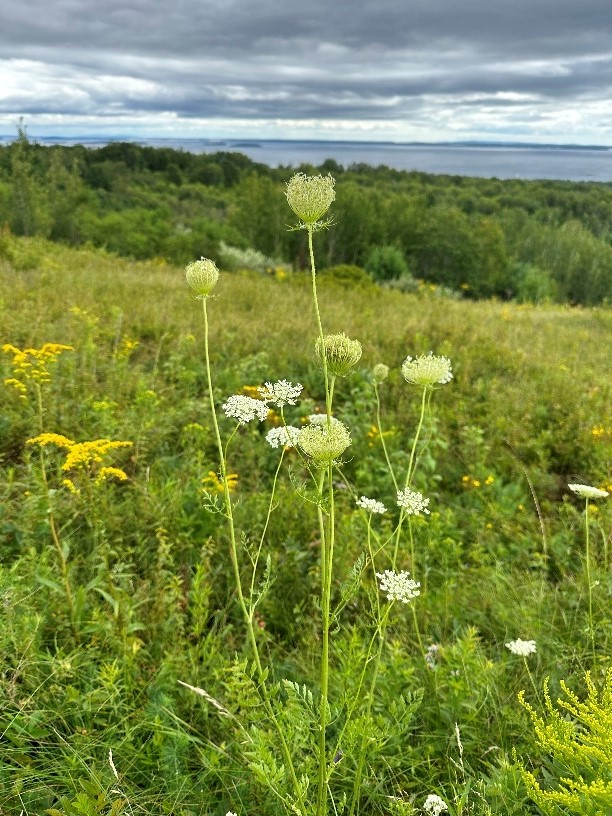
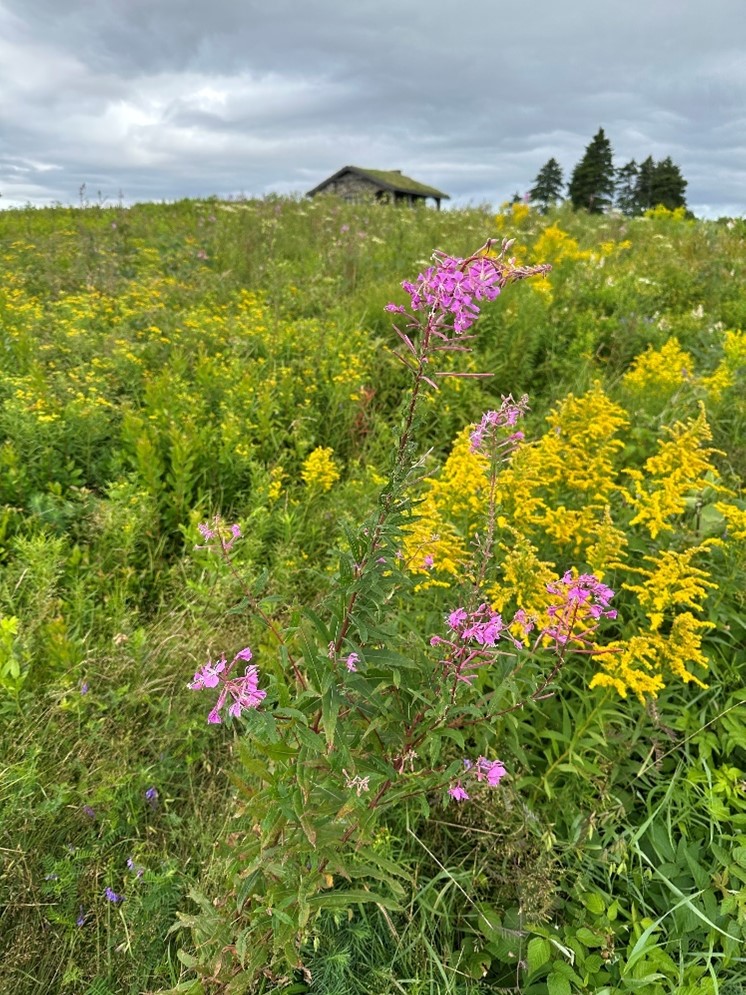
One of my favorite flowers is the native Fireweed (Chamaenerion angustifolium), a 4-petaled, purple-flowered perennial in the Evening Primrose family (Onagraceae), which can be seen on the left side of the road as one approaches the summit. It can carpet a field, especially after a fire (hence the name fireweed), although only a few plants occur along this road. Each plant can produce as many as 80,000 seeds, which can remain viable in the soil for years, ready to sprout after a fire or logging. A field of fireweed in bloom rivals any wildflower meadow in its beauty. It might be interesting to see what flowering plants would dominate if a plot on Beech Hill was burned in the fall, as is often done with blueberry barrens.
Himalayan Balsam (Impatiens glandiflora) is another pretty purple flower near the summit of Beech Hill. However, it is an invasive exotic plant. Looking much like our native Jewelweed (Impatiens capensis), it is native to the Himalayan Mountains but has spread in northern latitudes over much of the world. It is an annual plant that can grow to 8 feet tall, produces hundreds of seeds per plant, scatter the seeds up to 20 feet away, and produce toxins that inhibit the growth of neighboring plants. If the flowers at the top of the plant are cut-off, it sprouts more flowers lower on the stem. It can take over a field.
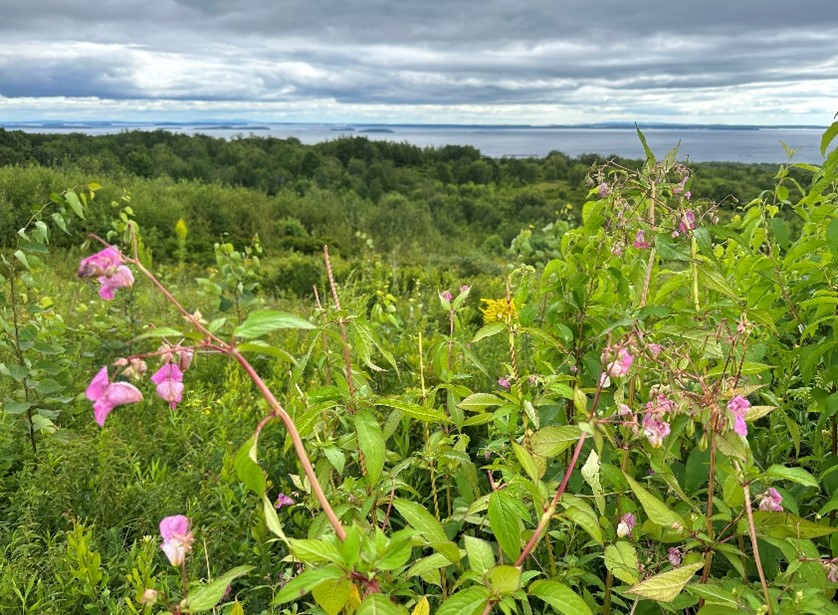
As an annual, it is shallow-rooted and is easy to pull up. However, to eradicate the plant, every plant must be pulled up before it sets seed. In removing this plant from my own property, it took me 5 years of pulling up every plant to deplete the seeds that were already in the soil. It has not returned.
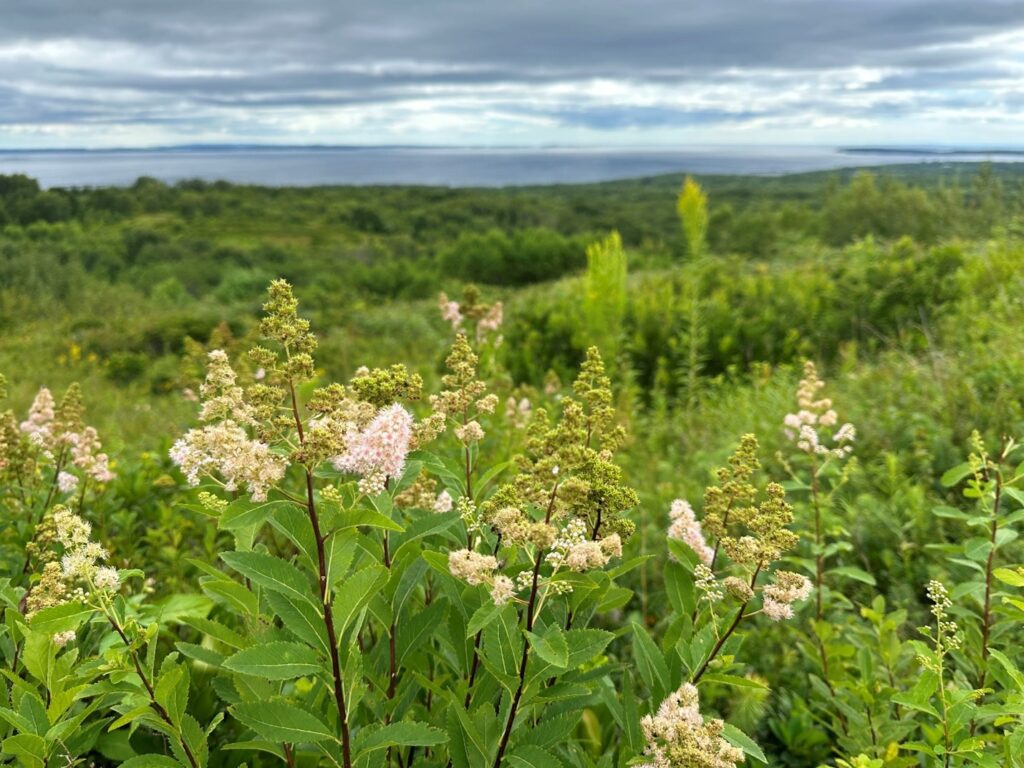
Meadowsweet (Spirea alba) is an ecologically valuable native shrub in the Rose Family growing along the road up to Beechnut. It begins to flower in late July, when not a lot else is flowering, and is an important nectar source for pollinators. The tiny flowers bloom in inverted cone-shaped flower heads and mature into the brown fruits that are beginning to form in the photo above. It is the hostplant for the Spring Azure butterfly (Celastrina ladon). In the fall, numerous migrating songbirds feed on its fruits.
I imagine that many people think of Beech Hill as the place where blueberries grow. But if it were pure stands of blueberries, there would be nothing else for pollinators to feed on for the rest of the growing season. It is the diversity of the plants on Beech Hill that forms the basis of an equally diverse insect population, maximizes the productivity of the blueberry fields, and creates a robust ecological web that will thrive into the future, even in the presence of a changing climate.

